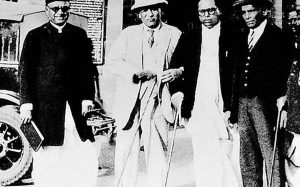
Source: Wikimedia Commons; Image only for representation purpose
In 1951, the District Collector of Pune requisitioned certain land for the development of a Kashiwadi Harijan Colony for the upliftment of Dalits. This was challenged by several landowners whose plot was listed to be acquired. The Court, in this case, held that such an acquisition would be discriminatory against non-Dalits under Article 15(1) of the Constitution. It stated that several people from different communities were also disadvantaged. Thus, such an arrangement was deemed to be discriminatory and against public purpose. And so, the Collector’s plan to create a separate settlement for the Dalit community was blocked.
Dr. B. R. Ambedkar had identified separate settlements as a key strategy for the empowerment of the Dalit community in his book, States and Minorities (1945). In Article II -Section IV-Part II, he added a clause that provided for separate settlements for Dalits. This was presented before the Constituent Assembly’s Sub-Committee on Fundamental Rights in 1947.
Ambedkar felt that separate settlements were necessary because — first, the social segregation of Dalits was facilitated by the fact that they were identifiable, and second, the proximity of their colonies to the main villages permitted exploitation. This proximity made the Dalit community economically dependent on the upper caste dominated village core. This, coupled with their “untouchable” status, blocked their economic resources since they were mostly landless labourers with whom the upper castes wanted no economic relationship. Also, this proximity always kept open the possibility of physical violence in Dalit communities.
Thus, Ambedkar felt that the traditional spatial arrangement played a key role in the Dalit community’s exploitation. He thought that separate settlements would change this by empowering Dalits through access to resources, and by removing the “distinction of Touchable and Untouchable”. He concluded by asserting that the only alternative to this would be perpetual slavery. The proposal, however, was not accepted by the Constituent Assembly.
Ambedkar felt that the traditional spatial arrangement played a key role in the Dalit community’s exploitation. He thought that separate settlements would change this by empowering Dalits through access to resources, and by removing the “distinction of Touchable and Untouchable”. He concluded by asserting that the only alternative to this would be perpetual slavery. The proposal, however, was not accepted by the Constituent Assembly during the committee stages and never came up in the Assembly’s plenary debates. The Assembly’s records do reveal the reasons for the proposal’s rejection.
Political discourse in the 1940s had emphasised reservations and quotas in public services, legislature and educational institutions as the primary measures to protect and promote the interests of the Dalit community. In this context, Ambedkar’s idea of separate settlements was and continues to be, rather unique and novel.
This blog is authored by Smriti Rao, a fourth-year law student from SLS, Hyderabad. She interned with CLPR last month.
